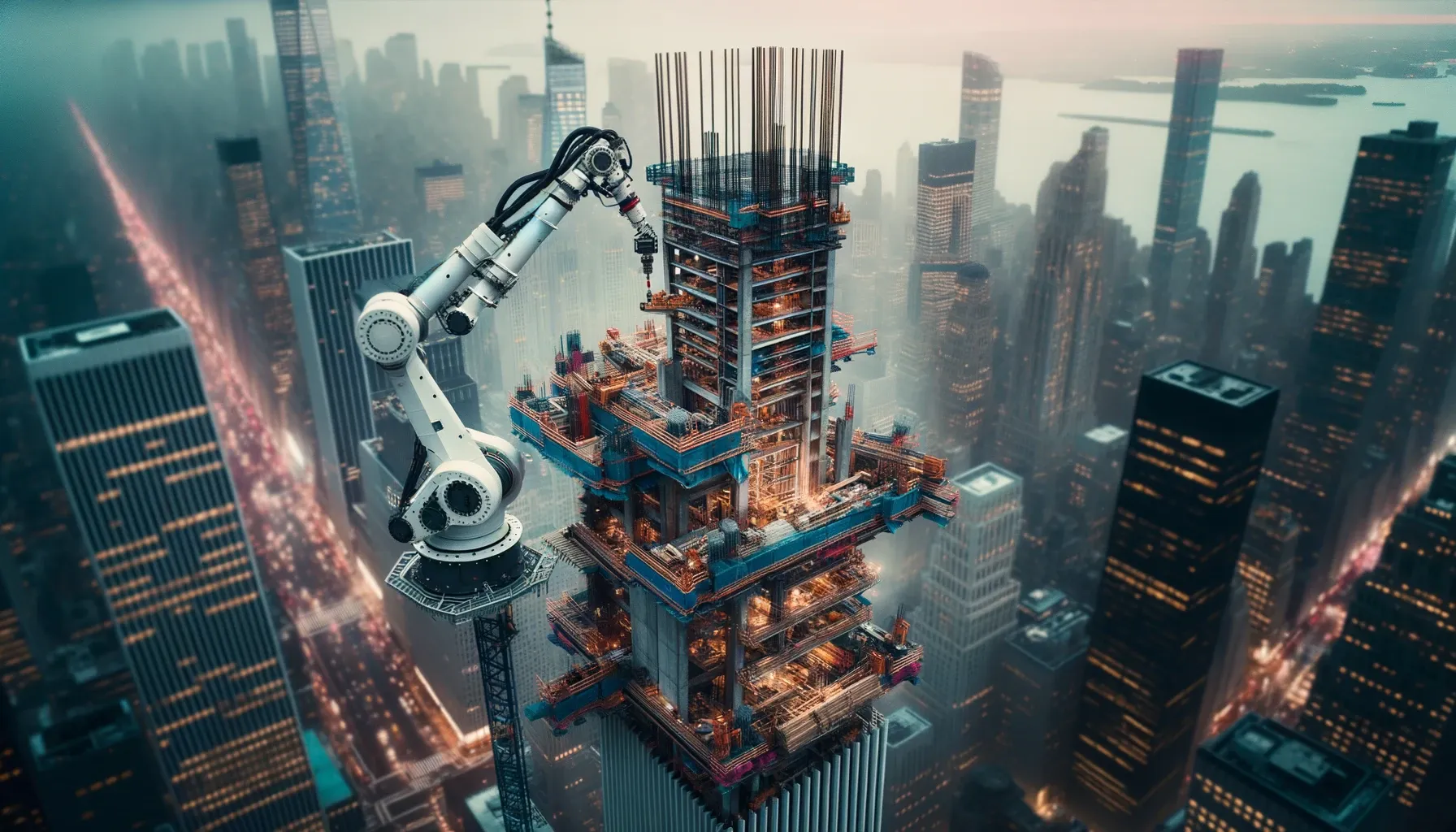The Digital Masonry: AI's Evolutionary Role in Modern Construction

In the heart of New York City, amidst the cacophony of urban life, a skyscraper takes shape. Yet, this is no ordinary construction. Guiding its rise is not just the expertise of architects and laborers, but the silent, relentless logic of artificial intelligence. From the historic streets of London to the futuristic skyline of Tokyo, the construction industry, once a realm of bricks and mortar, is being reimagined in bytes and algorithms. The silent partner in this architectural ballet? Artificial intelligence.
Historically, the construction sector has been perceived as a behemoth – mighty, yet resistant to change. However, the digital winds, relentless in their pursuit of innovation, are ushering in a new era. Traditional blueprints are giving way to dynamic digital models, and the iconic hard hat now often accompanies a suite of AI-driven tools.
The journey of AI in construction is emblematic of evolution rather than revolution. The initial forays were observational. Drones, armed with advanced sensors, began mapping construction terrains, offering insights that were both detailed and panoramic. This aerial reconnaissance transformed planning, ensuring resources were judiciously allocated.
Yet, AI’s aspirations transcended mere data collection. In Tokyo, for instance, sophisticated algorithms preemptively flagged potential project delays, factoring in variables from weather disruptions to worker availability. The outcome? Enhanced efficiency, with projects often wrapping up ahead of schedule.
However, the pièce de résistance in AI’s construction repertoire is arguably the Hadrian X, a robotic marvel capable of laying bricks with unparalleled precision. Named after the ancient Roman emperor Hadrian, known for his eponymous wall, this robot is a modern-day mason, but with a twist. Operating 24/7, the Hadrian X can lay up to 200 bricks per hour, constructing walls with an accuracy that challenges even the most skilled human hand. Its introduction not only accelerates construction timelines but also promises consistency, reducing the margin of error to near-zero.
Yet, the story doesn’t end with automation. The real magic unfolds when humans and machines collaborate. While robots like Hadrian X excel in precision tasks, the human element – with its intuition, creativity, and experience – remains paramount. The future, thus, is not one of displacement but of synergy, where human expertise is amplified by AI’s capabilities.
Beyond the construction site, the real estate landscape too is morphing. In this brave new world, a property’s valuation hinges not just on location or architecture but its digital DNA. Buildings equipped with AI infrastructure are the new gold standard, embodying adaptability in an ever-evolving milieu.
Of course, this digital metamorphosis is not devoid of challenges. Data privacy concerns, the ethical implications of automation, and the potential for job displacement are pressing issues. As the industry strides into the future, it must do so with a sense of responsibility, ensuring its workforce evolves in tandem with technology.
The horizon promises cities sculpted as much by code as by concrete. These urban utopias, with their AI-driven infrastructures, will stand as monuments to a time when humanity and technology converged to redefine the art of construction.
In the grand tapestry of the 21st century, the narrative of construction will shimmer with digital threads. It will recount an epoch where age-old practices were infused with AI, crafting not just edifices but a vision of the future.